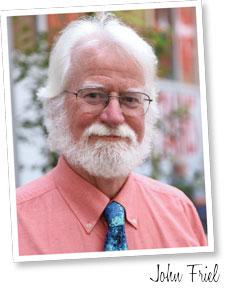7/1/2019
A Practical Maverick
John Friel

I’ve lived beside the Conestoga River for a decade. Friends smile when I call it “my river,” but I harbor no silly ownership notions. I say “my river” the way you say “my street.” It’s simply where we live.
Before and after moving here, I’ve frequently explored it by boat. At first, it was still Conestoga Creek; it got an upgrade in the ’70s. I’ve paddled about half of its 60 miles, in high water and low. I flattered myself that I knew a lot about it and its rich history.
So imagine my chagrin upon learning very recently of a pivotal event involving my river, one whose ripples rippled every stream and lake in the nation. It happened before I was born, but still.
In the late 1940s, Dr. Ruth Patrick led a groundbreaking study to measure the health of the Conestoga and its tributaries. Dr. Patrick was a trailblazer in many ways: A female scientist when those were scarce, she was among the first to use the word “ecosystem” and to grasp that biodiversity not only mattered, but could be quantified and used to gauge stream health.
I learned most of this from a lecture by a retired PhD who studied under Patrick. Dr. Bern Sweeney described his mentor and colleague at 90, donning hip boots and walking the legs off a boatload of touring politicians. She was a force of, and for, nature. She died in 2013 at 106.
Patrick was a maverick, but a pragmatic one. She didn’t shrink from funding from oil and chemical industries; she recognized that science and industry need one another. To their credit, the corporations realized that working clean was good business. But Patrick made it clear that she’d brook no interference. She would, and did, publish what she found.
Why does this matter, over 70 years later? Because the scientific methods Patrick invented are still used to monitor water quality and pinpoint problems. Her meticulous records and graphs were the template for myriad later studies and for the Clean Water Act, which she helped draft.
She advised presidents: Johnson on water pollution, Reagan on acid rain. In 1996, Clinton honored her with a National Medal of Science. She was an early champion for the redeeming virtues of wetlands, once reviled as worthless swamps. Said Sweeney, “She paved the way for women to excel in science.”
In short, she raised the nation’s, and the world’s, consciousness that nothing happens in a vacuum. We all have a river. We all live downstream.
The Conestoga has influenced the continent before. Near its mouth sits the eponymous village where eponymous wagons were built—the “prairie schooners” that hauled pioneer families westward, Ho! The men who drove those wagons, and the cigars they smoked, added “stogie” to the language. My river flows around Lancaster, Capital of the fledgling U.S. for a day: chased out of Philadelphia by redcoats, the Continental Congress met here in 1777.
Dirty as it looks, my river is probably healthier than when Patrick studied it, pre-EPA. Meandering past towns, sewage plants, farms and golf courses, it picks up many undesirable hitchhikers, but still supports a thriving food chain, from microbiota to mayflies, mollusks, fish and the larger creatures that flock to water, like snakes, ducks, geese, eagles, osprey, cormorants, turtles, muskrats, mink and, rarely, otters, and the thousands of humans whose drinking water it supplies. From my deck, it often resembles cocoa. Before it reaches the Susquehanna, it’s clear to the bottom. Nature is astonishingly forgiving.
That’s a snapshot, in color and black and white, of my river. How’s yours? GP
John Friel is marketing manager for Emerald Coast Growers and a freelance writer.